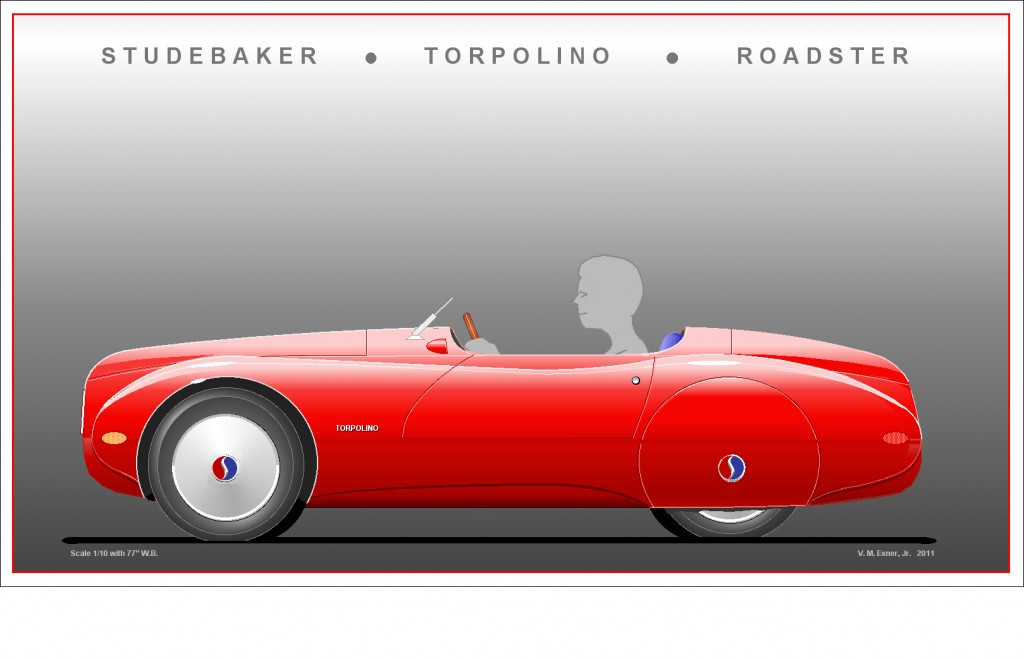
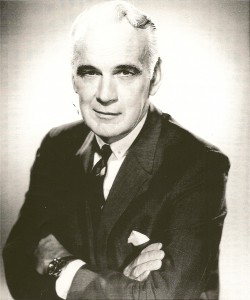 Virgil M. Exner, Sr. was surely one of the most creative and influential of all U.S. automobile designers—and the second, after Bill Mitchell, to be honored posthumously by the Henry Ford Museum’s Edsel B. Ford Design History Award. Exner’s name is not, however, often associated with small cars. Quite the opposite, “Ex” is best known for his decade at Chrysler, where, at the peak of his career, he created big, bold Hemi-powered “idea” cars in the Advanced studio–and then the “Forward Look” production vehicles whose high fins and flying-dart profiles virtually defined the latter half of the Fifties.
Virgil M. Exner, Sr. was surely one of the most creative and influential of all U.S. automobile designers—and the second, after Bill Mitchell, to be honored posthumously by the Henry Ford Museum’s Edsel B. Ford Design History Award. Exner’s name is not, however, often associated with small cars. Quite the opposite, “Ex” is best known for his decade at Chrysler, where, at the peak of his career, he created big, bold Hemi-powered “idea” cars in the Advanced studio–and then the “Forward Look” production vehicles whose high fins and flying-dart profiles virtually defined the latter half of the Fifties.
Yet this was the same Virgil M. Exner, Sr. whom, in a 1948 paper presented to the American Society of Body Engineers, warned that U.S. auto design had turned on to an unsustainable road, where by equating bigger with better, the automakers had committed themselves to adding ever-increasing amounts of non-functional bulk in order to remain competitive. The result, Ex predicted, would be “a sameness of style that would become irksome . . . a breed of vehicles that lacks character and excites no pride of ownership.” He suggested that “ease of handling” and fuel economy might suffer as well. Still, Exner had to deal with the realities of his time, and his assignments at GM, Studebaker, and ultimately Chrysler afforded him relatively little opportunity to explore smaller, more efficient transportation.
But the career of Virgil M. Exner, Jr. (right, in 1955; and below, 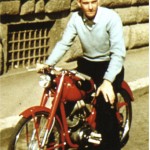 today) took a somewhat different turn. Two years before Ex Sr. wrote the critique cited above, Virgil Jr., age 11, had worked by his father’s side on the quarter-scale model that would become the production ‘47 Studebaker. A decade later Virgil Jr. collaborated
today) took a somewhat different turn. Two years before Ex Sr. wrote the critique cited above, Virgil Jr., age 11, had worked by his father’s side on the quarter-scale model that would become the production ‘47 Studebaker. A decade later Virgil Jr. collaborated
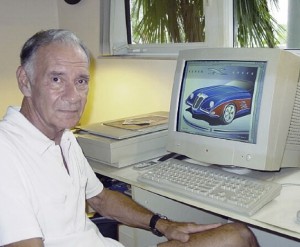 with Duncan McRae on Studebaker’s compact Lark. As a free-lancer he consulted on small-car designs for Volvo, Renault, Volkswagen, and Fiat, before winding up his professional career at Ford, where he contributed to the Maverick, Pinto, and Fiesta. Today Virgil is actively involved in the League of Retired Auto Designers (LRAD), whose 65 members continue to create new automobile designs “just for fun”; and with the Studebaker National Museum in South Bend. The latter produces an annual contest to “Design a New Studebaker,” for which Exner is a judge.
with Duncan McRae on Studebaker’s compact Lark. As a free-lancer he consulted on small-car designs for Volvo, Renault, Volkswagen, and Fiat, before winding up his professional career at Ford, where he contributed to the Maverick, Pinto, and Fiesta. Today Virgil is actively involved in the League of Retired Auto Designers (LRAD), whose 65 members continue to create new automobile designs “just for fun”; and with the Studebaker National Museum in South Bend. The latter produces an annual contest to “Design a New Studebaker,” for which Exner is a judge.
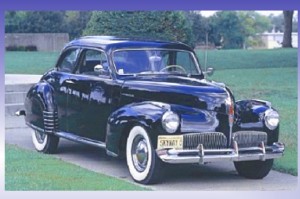 Last year, as a project separate from the contest, LRAD decided to
Last year, as a project separate from the contest, LRAD decided to
submit their own proposals for 21st-century Studes. Twenty-one LRAD members contributed to an exhibit titled Designing the New Studebaker, which ran from November to June, 2011. Virgil’s contribution was the delightful little roadster at the top of this post, which borrows design cues from the ’41 full-size Studebaker (left, which his father designed); while the name Torpolino merges Torpedo with Topolino, the popular nickname for the original Fiat 500 of 1936-54. Yes, that connection strikes us as a bit tenuous, too, except that the archetype Cinquecento was a lovable little economy car from which many beautiful, sensual sports cars were derived. Interestingly, in our conversations regarding the Torpolino, Virgil himself suggested that a Fiat 124 driveline might be substituted for the Volvo 1800 setup shown here. (Click on the drawing to enlarge.)
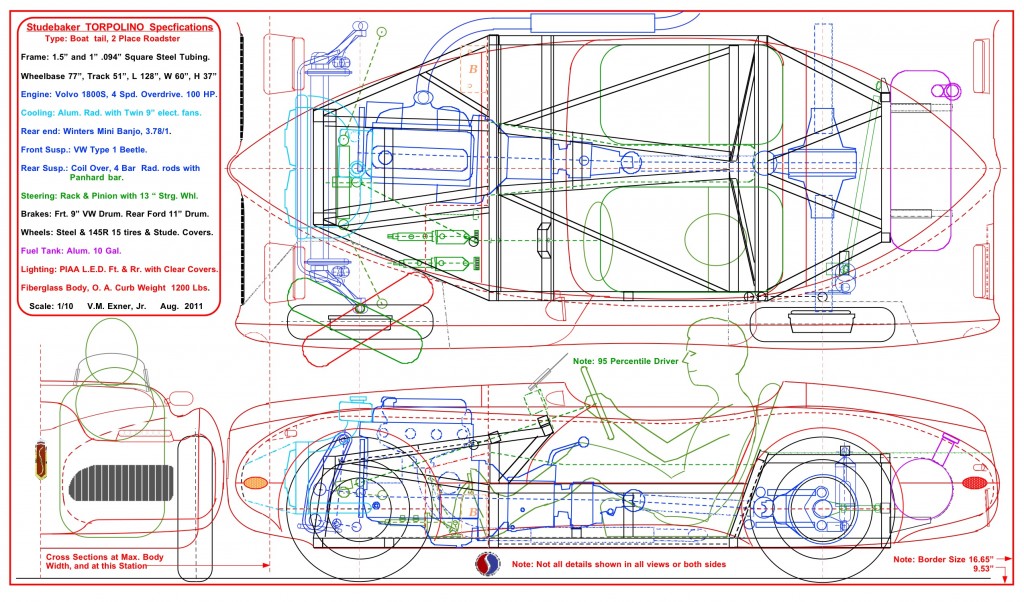 Virgil also submitted this mid-engine, VW-powered variation (below). He envisions one or both offered in kit form; we see inspiration for a modern sports roadster combining a real driving excitement with economy and style.
Virgil also submitted this mid-engine, VW-powered variation (below). He envisions one or both offered in kit form; we see inspiration for a modern sports roadster combining a real driving excitement with economy and style.
We’re wondering if a complete Subaru Impreza driveline would fit in the mid-engine version, providing modern emissions control (and 170 hp), albeit with only acceptable (20/26 mpg) fuel economy. Any other suggestions?
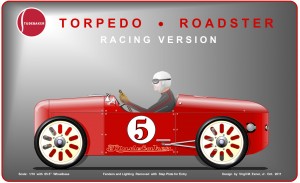 More recently, Virgil sent us several drawings of this “antique racer” (left) version of the mid-engine car. “I have a set of 5 scale rubber Firestone Balloon tires that my father had for his 1920’s Meccano set,” he wrote. “They are beautiful and in perfect condition. They are 3.5 inches in diameter, and I intend to make a 1/8 scale RC model of the ‘Antique’ using them. Then, I’ll think about the full size version.“
More recently, Virgil sent us several drawings of this “antique racer” (left) version of the mid-engine car. “I have a set of 5 scale rubber Firestone Balloon tires that my father had for his 1920’s Meccano set,” he wrote. “They are beautiful and in perfect condition. They are 3.5 inches in diameter, and I intend to make a 1/8 scale RC model of the ‘Antique’ using them. Then, I’ll think about the full size version.“
The Museum Exhibit also included Exner’s 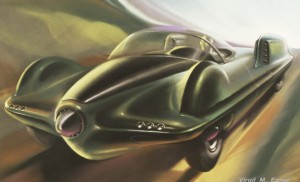 proposal for a full-electric “Silver Bullet” coupe (below); a kind of plug-in belly-tank speedster based on a rather fanciful pastel rendering done by his father in 1948 (right). The chromed “bullet nose” actually appeared on the 1950-51 production Studebaker, and although it lasted only those two years it has since become emblematic of the marque.
proposal for a full-electric “Silver Bullet” coupe (below); a kind of plug-in belly-tank speedster based on a rather fanciful pastel rendering done by his father in 1948 (right). The chromed “bullet nose” actually appeared on the 1950-51 production Studebaker, and although it lasted only those two years it has since become emblematic of the marque.
The moden Silver Bullet is motivated by a mid-mounted 250hp electric motor. Lithium-ion battery packs, in the sills below the gullwing doors, can be recharged or simply swapped out for fresh units.
Finally–and, admittedly, only vaguely apropos of the above–we wanted to share with you with this beautiful image which Virgil was also kind enough to send
us: a mid-1920s proposal by Ex Sr. for an ad for a revived Stutz Bearcat.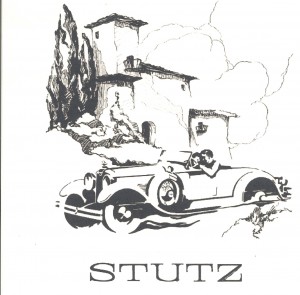 Not timely, perhaps, but remarkable for its timelessness, with just a few simple lines it expresses all the romance and passion of the autombile. Let’s never forget that.
Not timely, perhaps, but remarkable for its timelessness, with just a few simple lines it expresses all the romance and passion of the autombile. Let’s never forget that.

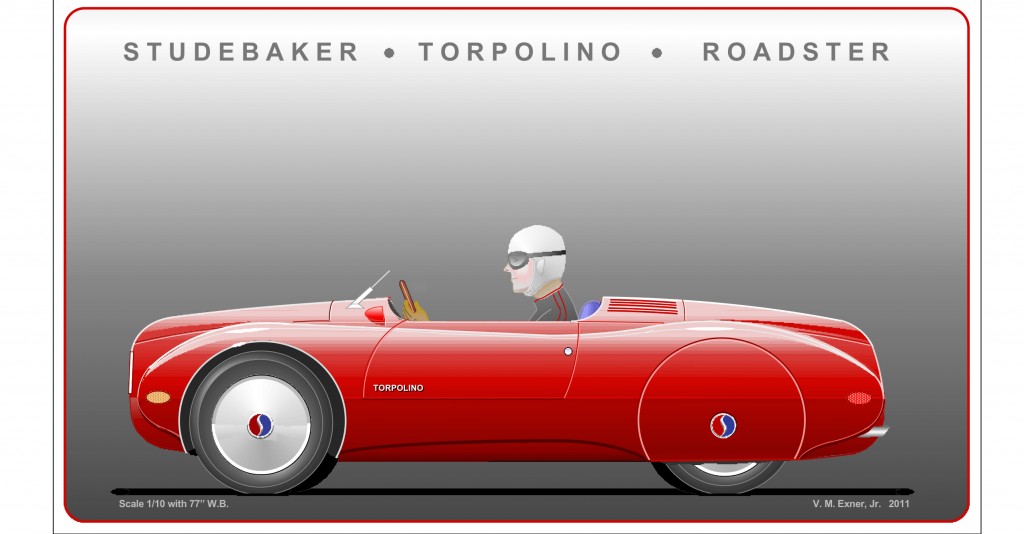
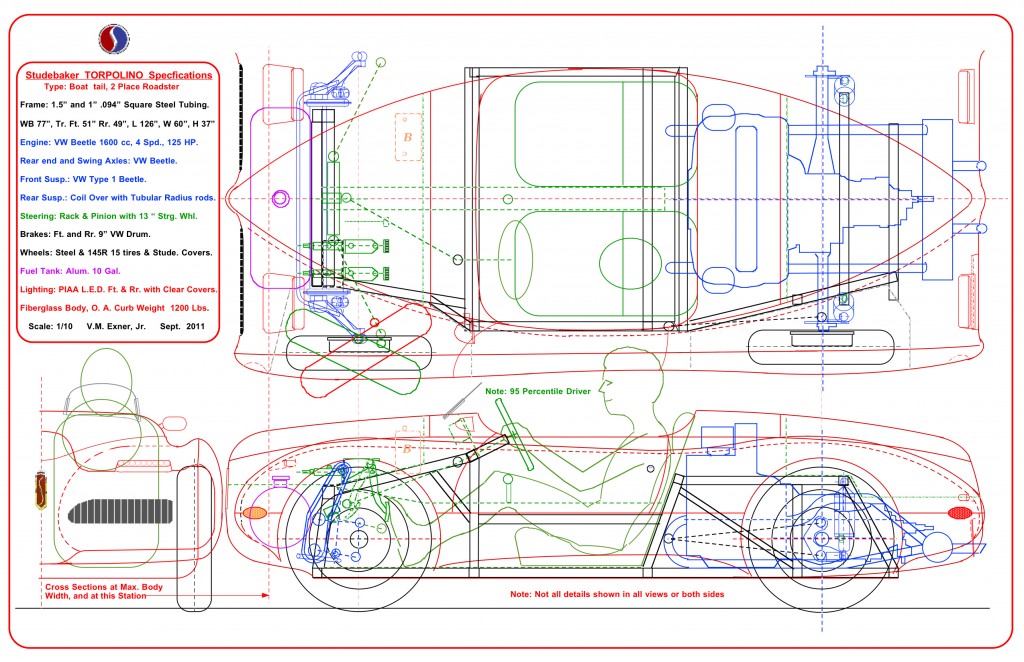
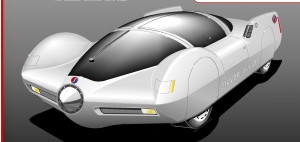
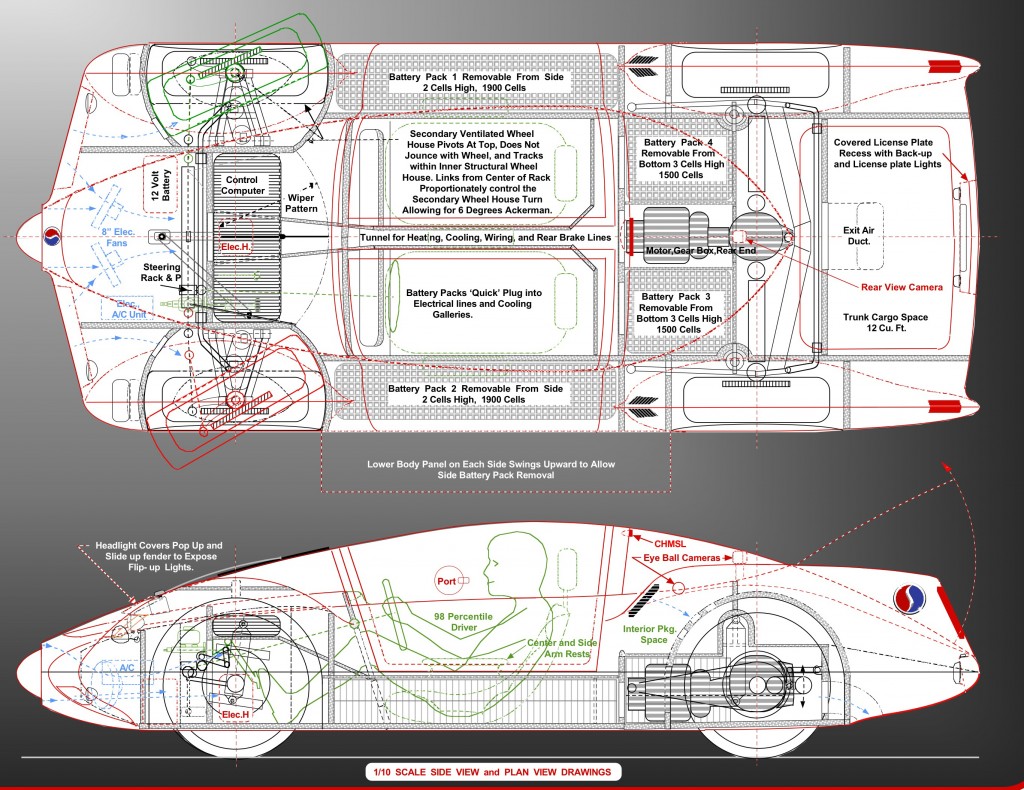
4 Responses to New small . . . Studebakers?